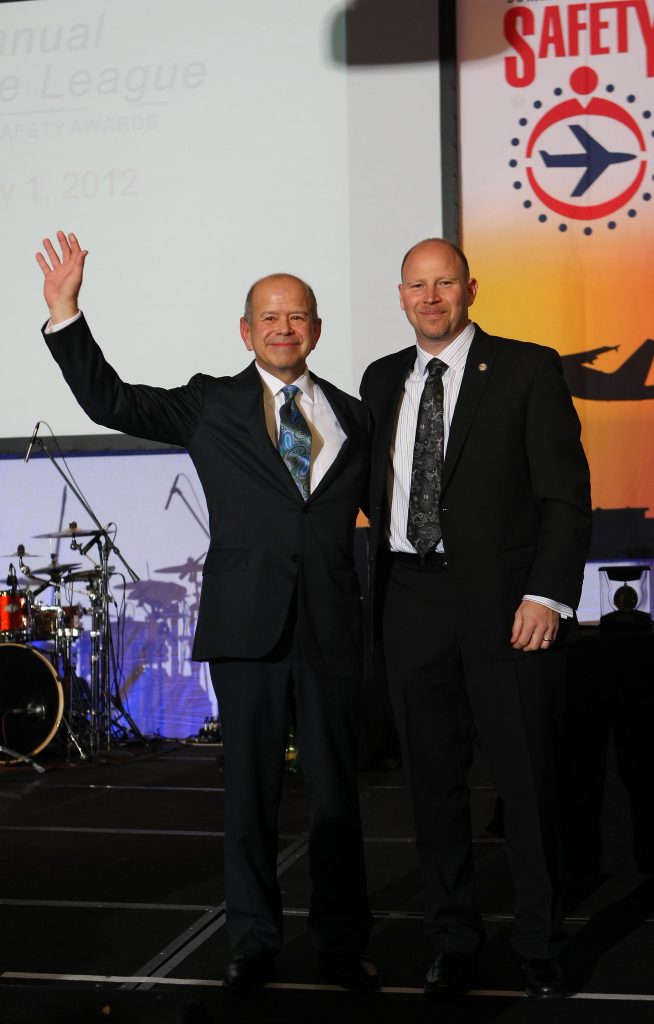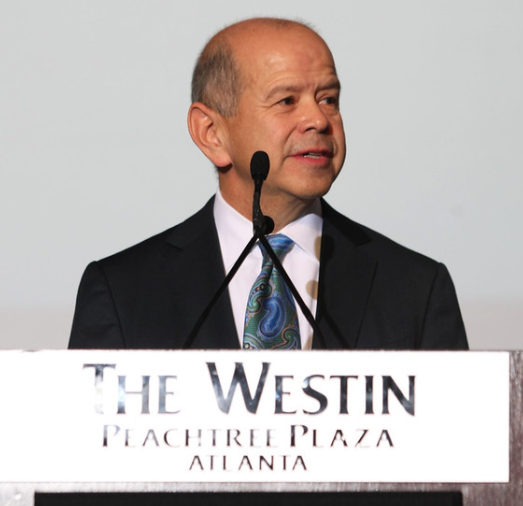
2012 – Winners of the 8th Annual Archie League Medal of Safety Awards, honored on Feb. 1, 2012 at the Westin Peachtree Plaza Hotel in Atlanta:
Alaskan Region: Kristina Kurtz, Anchorage TRACON
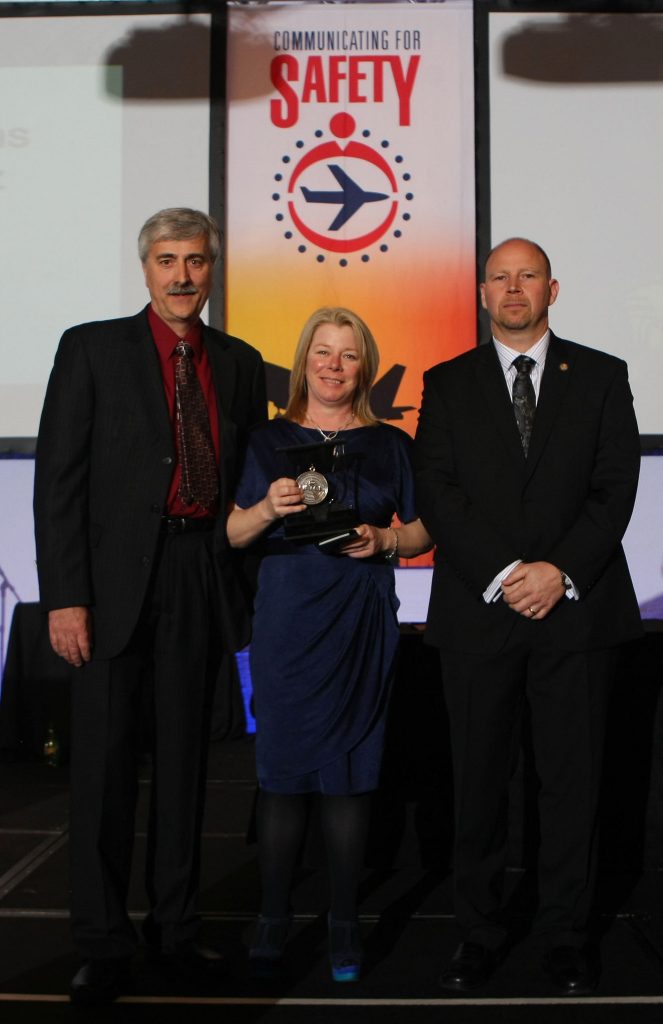
A non-instrument-rated pilot who was receiving radar service from an Anchorage TRACON controller encountered Instrument Flight Rules (IFR) weather – meaning the pilot would have to rely on instruments to land – while flying at night on Nov. 6, 2011. This is about the worst thing a controller wants to hear, as these situations often end in accidents.
But this controller, Kristina Kurtz, has 24 years of experience and worked quickly to make sure this situation ended well. She was able to talk a general aviation pilot with no instrument experience through white-out conditions to a safe landing at Merrill Field, the Visual Flight Rules (VFR) general aviation airport in downtown Anchorage.
Kurtz: Are you IFR-capable and qualified sir?
N15F: I’d like to see some lights of Anchorage and if we can, then we can probably come in. But I can’t seem to keep my GPS working so I’m kinda in the dark.
Kurtz verified the pilot’s situation and instructed him to maintain his current heading and altitude. These were of paramount importance because of the likelihood that the pilot would fly into the terrain because of the lack of visibility.
Kurtz immediately took action to sterilize her airspace and frequencies and began to solicit the assistance of an instrument-rated pilot. The first two attempts failed – the first due to fuel limitations and the second because of a Lifeguard flight. The third attempt succeeded in enlisting the help of a Cathay Pacific Airways pilot.
As the controller and Cathay Pacific Airways pilot began to acquire additional information to prepare the pilot for a descent from IFR to VFR or clear conditions, the pilot exited the IFR conditions and reported that he could see the lights of Anchorage – although the intended airport was still not visible.
The controller continued to provide assistance and instructions to direct the pilot to the airport.
Kurtz: “At your twelve o’clock, six miles is Elmendorf Air Force Base, sir. I’m showing weather should clear up for you slightly in about another half mile.
N15F: Copy. Maintaining 17 hundred feet.
Kurtz: Merrill Field is now 11 o’clock, one mile.
Kurtz worked the aircraft until directly over the airport, telling the pilot that the airport was directly below him. The pilot finally reported that the airport was in sight. Kurtz told him to continue to keep the airport in sight and contact Merrill Tower for landing clearance.
N15F: Thanks. Good day.
This event resulted in a safe landing because Kurtz had the wherewithal to ensure that an instrument-rated pilot was on frequency before he issued navigational instructions to the pilot. The instrument-rated pilot could ensure that all necessary information was obtained and that all requirements were satisfied to handle the emergency. This was an excellent example of resource management.
Central Region: Todd Mariani, Kansas City Center
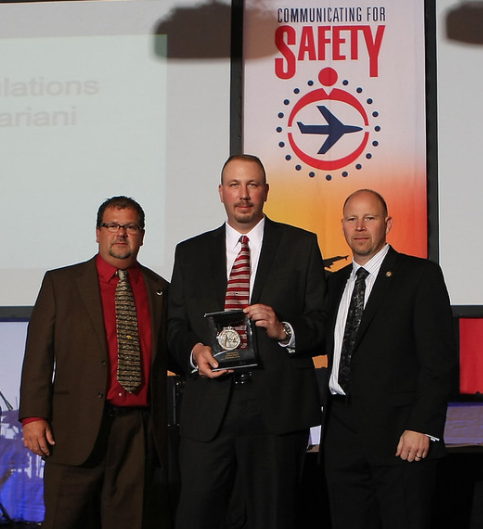
During the early afternoon on Aug. 10, 2011, air traffic controller Todd Mariani was working on one of the low satellite radar sectors at Kansas City Center (ZKC). A Van’s Aircraft RV8 requested to descend while continuing to maintain clear weather (VFR) conditions.
Mariani lost radar identification with the pilot and terminated services just after he advised the pilot about ZKC’s limited radar coverage. About 15 minutes later, Mariani received another call from the pilot, asking for radar services again. This time, he was in difficult weather conditions and needed help.
The pilot was circling his scheduled destination, Elkhart Airport (EHA), which appeared to be closed when the pilot described large “Xs” on the runways. Unfortunately, at the time, Mariani was unable to locate the aircraft because he was too low for radar coverage and the pilot was unable to climb above the overcast clouds.
Mariani: November niner-six-three tango papa, are you circling Elkhart or have you passed Elkhart?
N936 TP: Nine-six-three tango papa, I’m circling Elkhart.
Mariani: November three tango papa, what does it look like over to your east?
N936 TP: I’ve got low ceiling at probably 4,500 to 5,000. How far east do I need to go?
With about two hours of fuel remaining and a malfunctioning GPS, Mariani searched for an airport that was reporting VFR conditions. He told the pilot that Liberal, Kan. (LBL), was about 30 miles to his east and VFR traffic was arriving and departing from there. The pilot seemed flustered by the inability to load LBL into his GPS.
At that point, air traffic controller Scott Barnes, working the low sector adjacent to Mariani, took over Mariani’s airspace so he could fully assist the aircraft. Mariani got one radar hit on the aircraft 12 miles east of LBL, but the pilot was uncomfortable with the approaching thick clouds and started to return to EHA. He circled the airport again before Mariani calmly reassured him about the weather at LBL.
“I checked in with him every minute and kept reassuring him that we would get him somewhere safe,” Mariani said.
Then, another airport, Hugoton, Kan. (HQG), suddenly emerged as a viable option. The airport was open and had fuel for the aircraft. It was also closer. Mariani was able to identify him again on radar halfway between HQG and EHA. His heading was good and flight conditions were improving. Mariani called position reports for the pilot, who got the airport in sight. He landed without incident.
Mariani has been an air traffic controller for 22 years, with 10 years of military experience at five different approach controls. He has been with the FAA at ZKC for 11 years.
Eastern Region: Matt Reed, Potomac TRACON
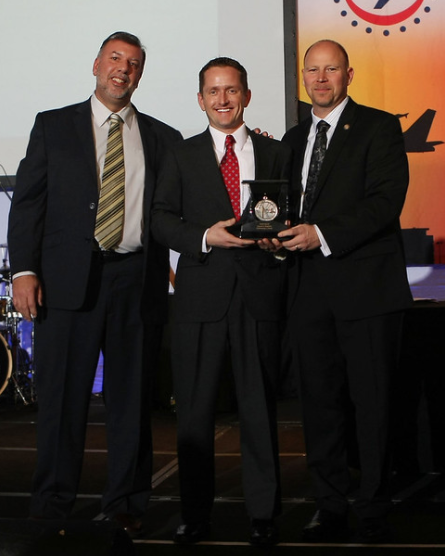
As the region that covers the nation’s capital and some major international airports, the Potomac Terminal Radar Approach Control facility (PCT) handles a large number of international flights. Sometimes, the pilots of these flights can be difficult to understand, or they use different terminology.
On July 8, 2011, a series of problems occurred. But PCT controller Matt Reed was able to deftly handle the challenges and help an Airbus A330 commercial jet land without incident.
The Turkish Airlines flight was scheduled to land at Dulles International Airport, but was holding in New York Center airspace due to convective weather impacting airport arrivals. The pilot, who had a thick accent, radioed into the TRACON that the plane was “fuel critical,” non-standard terminology that is open to interpretation.
The Airbus pilot said he had a maximum of “10 minutes” of fuel remaining; it is still unknown whether he meant 10 minutes total or 10 minutes until reserves kicked in. Either way, the situation required immediate action to ensure the safety of the passengers. Reed recognized that the proposed re-route would not get the aircraft anywhere close to IAD in 10 minutes.
Adding to Reed’s concerns, the pilot was adamant that he would still land at Dulles. However, Reed treated the case like a fuel emergency and ordered the pilot to land immediately at Baltimore-Washington Thurgood Marshall International Airport (BWI). Against the pilot’s wishes, Reed and the TRACON declared an emergency for the aircraft and diverted it to land at BWI – 12 minutes after the fuel conversation.
Matt Sullivan, the NATCA facility representative at PCT, said Reed’s aggressive action may have saved the lives of the passengers and potentially others on the ground.
“Matt did an excellent job, with no caveats,” Sullivan said. “When you factor in that the pilot was hard to understand, using terminology that is not standard, it makes his quick action all that much more special.”
Sullivan added that Reed is not just a great air traffic controller, but he is also devoted to protecting this country, and working on behalf of his union.
After this flight assist, Reed went off to boot camp for the Virginia Air National Guard. When he returned, he began to serve as the NATCA representative for the Chesapeake region of the facility.
Sullivan said Reed is a perfect representative of all the hardworking controllers at Potomac TRACON, who safely guide tens of thousands of flights near some of the most sensitive and important landmarks in the United States.
“We deal with the President, with dignitaries, lots of international flights, you name it,” Sullivan said of PCT. “So it’s exciting to have a winner here, and it’s great that it can be someone like Matt.”
Great Lakes Region: Guy Lieser and Steve McGreevy, Chicago Center
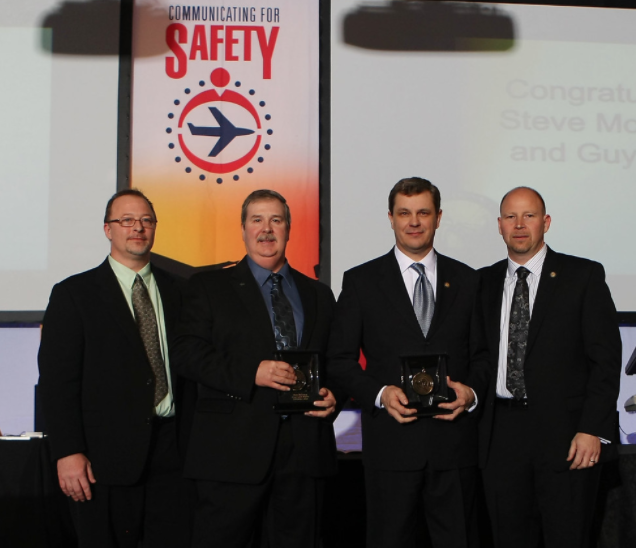
Chicago Center (ZAU) oversees some of the busiest airspace in the world, thanks to O’Hare International Airport, the country’s second-busiest airport. But Chicago controllers Steve McGreevy and Guy Lieser saved the day at a less busy airport in eastern Iowa, earning them a coveted Archie League Medal of Safety Award.
On the afternoon of April 19, 2011, in the middle of a major storm that paralyzed much of the upper Midwest, McGreevy was contacted by a Piper Seneca seeking to land in Dubuque, Iowa, a Mississippi River city of around 60,000 that sits at the far western end of the Illinois-Wisconsin state line.
McGreevy could immediately tell from the pilot’s strained and nervous voice that something was wrong. McGreevy began the process of vectoring the pilot for an approach to DBQ. He also noticed that the plane was assigned headings that didn’t match the course the aircraft was actually flying. At this point, Lieser came over to sit with McGreevy and lend a hand.
The controllers suspected that the plane was encountering icing conditions. Furthermore, his localizer was inoperative. Everything seemed on course for it to land without trouble, when, at around 3,000 feet, the plane suddenly detoured east across the river. The pilot attempted to come back around for another landing, but he struggled to keep his plane in line.
The weather was terrible and the controllers tried to reroute the plane to Davenport, another Iowa city further south along the river. But the pilot had less than an hour’s worth of fuel and the weather in the Quad Cities wasn’t much better, making landing at Dubuque the only palatable option.
Guy and Steve talked the pilot down after creating a plan of action that would enable him to glide into Dubuque. Steve methodically directed the pilot down from 3,000 feet to around 1,000, at which point the pilot could make out the landing lights at the airport.
After he landed, the pilot said, “Thank you, thank you, thank you!”
Lieser has more than 30 years of experience as a controller and McGreevy has 27 years. Toby Hauck, ZAU Facility Representative, said the two were able to help guide the plane to safety because they have supplemented their experience with over 2,500 hours of instrument flight time in the cockpit themselves.
In addition, Lieser is a certified flight instructor and a certified aircraft appraiser. Hauck said the two deserve this award, but that it should not come as much of a surprise that they would be considered.
“They both are excellent controllers, really reliable,” Hauck said. “They are solid veterans, both very polished and strong union members. It’s fitting that they receive an award like this. It is the combination of being a veteran and an experienced pilot that makes the two of them very good controllers.”
New England Region: Chris Henchey and Ryan Workman, Boston Center
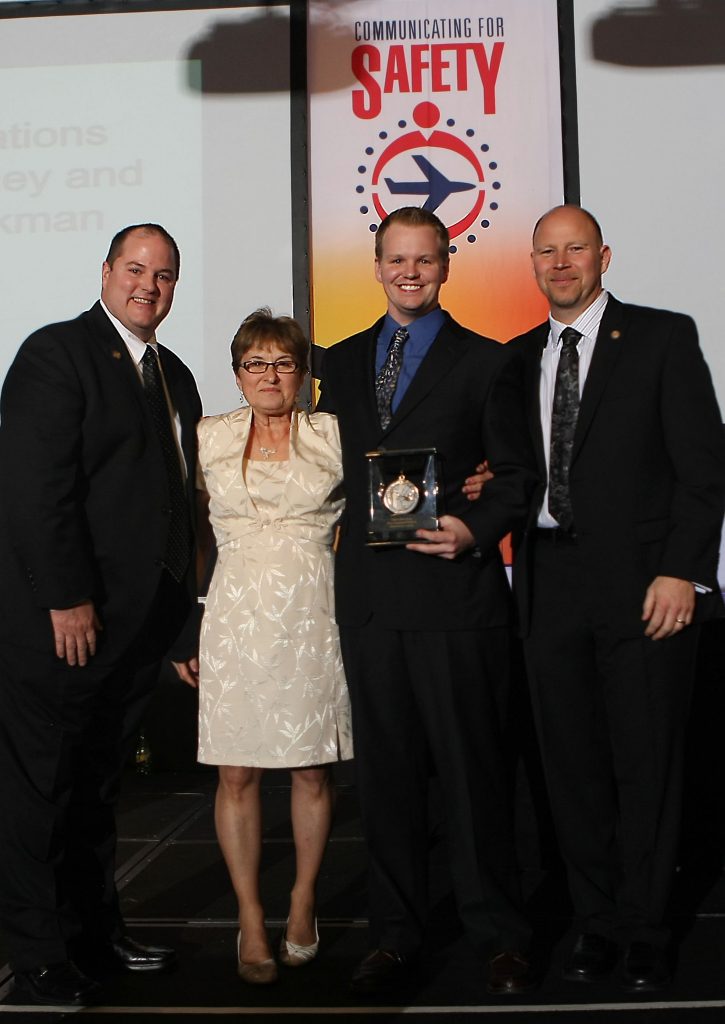
On Oct. 9, 2011, air traffic controller Ryan Workman began assisting the pilot of a Cessna 150 on a Visual Flight Rules (VFR) or clear conditions flight plan en route from Fitchburg, Mass., to Caledonia, Vt., when the pilot reported on the Concord Sector frequency. It was apparent she was having difficulty with navigation.
The pilot indicated she was proceeding first to the Lebanon (LEB) VOR. Workman advised that LEB would be 35 degrees left of her present heading and then saw to it that she would be properly oriented toward LEB. At this point, Workman became concerned about the condition of the flight, and asked for a controller with pilot experience. Enter air traffic controller Chris Henchey — a CPC for just 10 months, working at his first FAA facility. Henchey was able to get the pilot headed in the right direction and then returned to his previous position.
But then more problems arose. The pilot reported that the plane’s engine was running rough. Henchey came back over to help and began running through a checklist to help the pilot regain control of her flight. However, she began losing power just before the engine failed.
Henchey: Try heading to the Concord Airport. That’s the nearest airport and if you can, just keep that power full. And try to maintain your altitude as best as you can.
N66248: Sorry, there is no power. My prop has stopped, I’m just a glider I guess.
Henchey: November 248, roger. Do you see any highways or fields around?
N66248: Well, there’s one below me just outside my left window. I’m up too high.
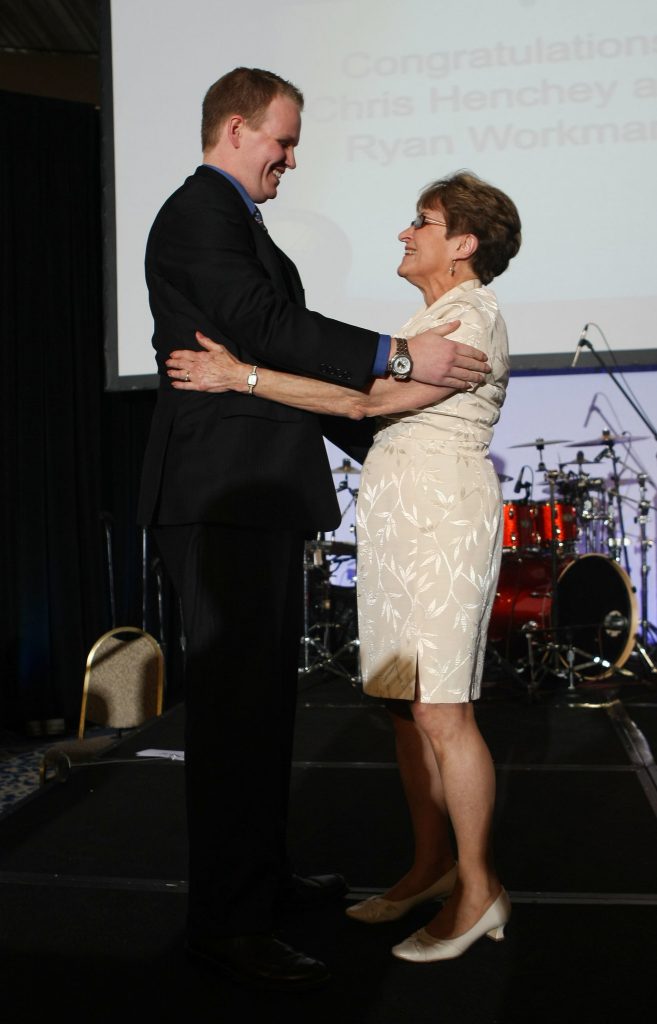
Henchey advised the pilot to set up for maximum glide. She was losing altitude at approximately 700 feet per minute, and Henchey determined that she would not be able to make it to Concord. He went over the engine failure checklist that he recalled from his time flying a Cessna 152 and asked her to try to start her engine one more time and to keep the field in sight. He then instructed her to call the aircraft emergency frequency when she landed in the field.
The aircraft descended below 2,000 feet before radio contact was lost. At that point, all the controllers could do was watch and hope that she would be able to glide to a safe landing. As she hit 1,800 feet, the controllers watched the radar as she started to climb once again. The pilot was able to restart her engine, radio contact was restored and she was vectored to Concord once again for a safe, runway landing.
After the incident, the aircraft was inspected to determine the cause of engine failure. A mud wasp nest was found in the engine’s air intake manifold. Without Henchey’s help to restart the engine, this flight could have had a very different outcome.
Northwest Mountain Region: Charlie Rohrer, Denver Center
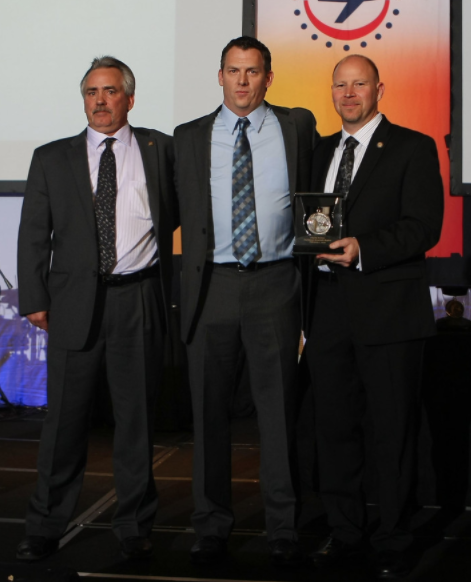
Call it fate that Denver Center air traffic controller Charlie Rohrer took a class on hypoxia, a condition in which a person’s body is deprived of oxygen, the week of May 9, 2011.
The very next week Rohrer saved the lives of two passengers because of the knowledge he received from that training.
On May 17, 2011, the pilot of a Cirrus SR22 became incapacitated from hypoxia during the plane’s ascent on a flight from San Bernardino, Calif. to Colorado Springs, Colo. His wife, who had no flight training, was forced to take over the controls.
Rohrer noticed something suspicious when the 70-year-old pilot began having difficulty breathing during their routine conversation. He immediately recognized the symptoms of oxygen deprivation.
Rohrer: I think you might be experiencing some hypoxia. Would you like a lower altitude?
N1WA: One Whiskey Alpha…
Rohrer: You’re barely readable, would you like lower?
Taking quick action, Rohrer asked for help. Is someone out there familiar with the Cirrus model? The pilot of a Great Lakes Airlines flight, headed to New Mexico, was listening and offered to assist. He coached the pilot’s wife on what knobs to turn to get the aircraft down to a lower altitude, which alleviated the hypoxic effects.
While the pilot assisted the wife on a controlled descent, Rohrer simultaneously guided the aircraft back on course for a landing. It had been headed dangerously toward the mountains.
Thirty minutes later, the pilot regained consciousness and was back at the controls. Rohrer instructed the pilot to land in nearby Farmington, N.M., but the pilot resisted.
N1WA: I think I’m better off going to Colorado Springs… I’m not ready to land the airplane.
Rohrer: The problem with going to Colorado Springs is you gotta go all the way up to 17,000 feet and then we’re in hypoxia again.
The pilot finally lined up the plane for a landing at Farmington airport but, because he was still woozy, the Great Lakes flight pilot and Rohrer decided to declare an emergency. The Farmington tower helped the pilot and his wife land safely, but not until after the wife seriously considered deploying the emergency parachute.
Said the first officer of the assisting Great Lakes flight to an FAA employee publication: “[Rohrer] was great. I think he did a great job of trying to coach [the Cirrus pilot] down and coordinating our help in dealing with the situation.”
Northwest Mountain Region: Ken Greenwood, Josh Haviland, and Ryan Herrick, Seattle TRACON
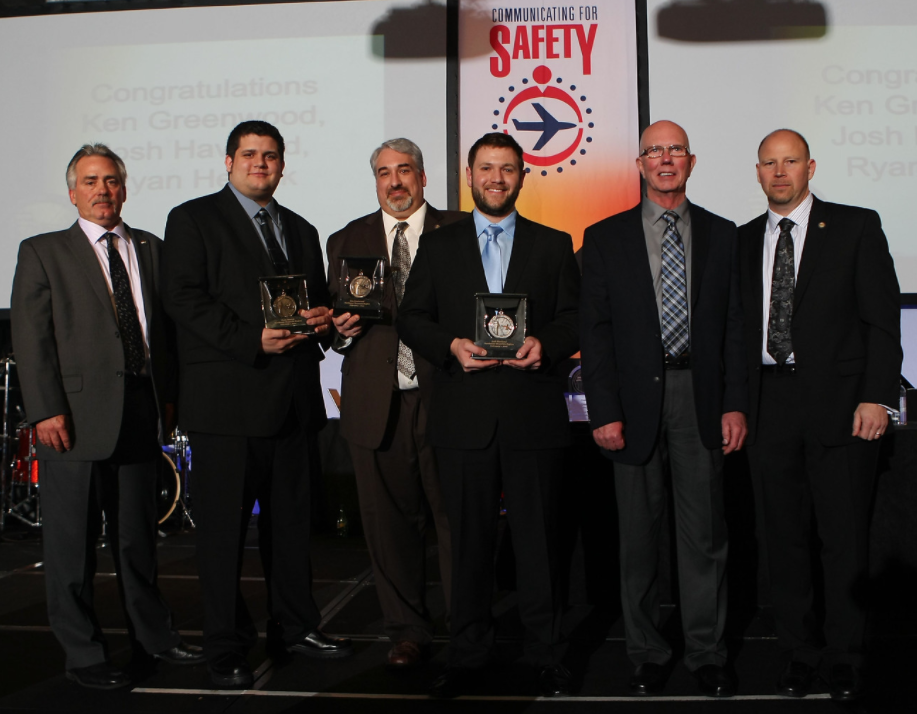
“You know what? You just saved my life.”
Some of the most important words an air traffic controller could ever hear were spoken by the pilot of a Mooney on Dec. 10, 2011, when it became clear that a harrowing turn of events – running out of fuel – would end safely at Renton (Wash.) Municipal Airport (RNT).
Had Seattle TRACON (S46) certified professional controller-in-training Ken Greenwood – an 18-year veteran of Boeing Field (BFI) with extensive knowledge of the area around Renton – not noticed quickly that the pilot was in fact turning away from RNT (toward BFI), the aircraft would have possibly hit the blast fence instead of clearing it.
Greenwood had less than 50 hours on position at S46, but he showed confidence as he worked with his instructor Ryan Herrick to direct the pilot’s descent from above a cloud layer. The pilot had called in VFR conditions above an IFR layer, looking for a VFR hole to get down and land at Auburn Municipal Airport. But Auburn would not remain his destination for very long.
“We got a PIREP (pilot report) from another sector about a VFR hole 25 miles southeast of Sea-Tac,” Greenwood said. “I gave a VFR vector toward Thun Field (PLU) and gave weather for Thun and TCM (Tacoma-McChord Field).” At that point, trainee Josh Haviland plugged in next to Greenwood. Haviland had previously owned a pilot training school and is a flight instructor.
The pilot reported that he was already out of gas in one tank and almost empty in the other and was still on top of the cloud layer at 7,700 feet. Greenwood gave him a vector toward Auburn airport and a decent clearance to 4,000 feet.
“The pilot was very busy or distracted, possibly trying to set up his GPS,” he said. “He was not answering all our transmissions and he was not flying the headings we issued very well.”
At this time, several controllers were coordinating with the SEA, BFI, and RNT towers. All departures had been stopped and VFR aircraft were being sent out of the VFR pattern at RNT. Herrick called SEA local assist to ask if anyone could see any breaks in the overcast.
At 3,200 feet, the pilot reported he had ran out of fuel and that he was still in the clouds. Haviland suggested to Greenwood that he give the pilot the best glide speed and level flight. At 2,200 feet, the aircraft reached VFR conditions four miles south of RNT.
But at 1,600 feet, the pilot saw BFI, which was more than six miles to the northwest. Greenwood saw him start to turn toward BFI but then acted quickly and decisively to get him to turn back toward RNT. He got the airport in sight at 1,100 feet. A safe landing ensued.
Pilot: You know what? You just saved my life.
Greenwood: Anytime, sir.
Anytime, indeed.
AUDIO: Listen to highlights of the ATC audio of this event.
Southern Region: Alvin Kent, Atlanta Center
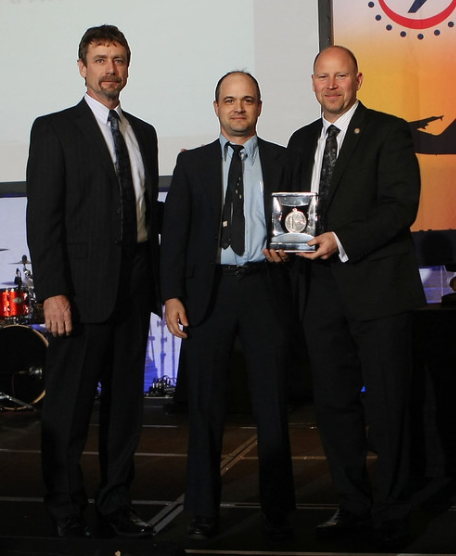
Five minutes.
On Nov. 10, 2011, the pilot of a Cessna Skyhawk with a rough running engine was five minutes away from landing safely at an abandoned airport in rural southwestern Alabama. The pilot was headed southeast from Meridian, Miss., to Dothan, Ala., and was just halfway through the trip when he had to declare an emergency. Five minutes seemed so close, yet was frustratingly far away for this aircraft.
Luckily for the pilot, the air traffic controller on the other end of the microphone was 22-year veteran Alvin Kent of Atlanta Center. Kent knew his airspace like the back of his hand.
Kent: The Pine Hill (Municipal) Airport is at 12 o’clock in about five minutes, do you got that much time?
N813HY: No, it’s hitting on one cylinder, uh, everything’s going.
N813HY: I’m holding at about 5,000 feet, uh, this is very bad, I don’t see the airport…about five minutes?
Kent: Five minutes, if you can fly for five minutes you will go right to it.
The fact that this abandoned airport factored into the incident at all is a remarkable testament to Kent’s expert knowledge of the area and his ability to quickly execute a plan. His steadiness helped calm the stress of the situation.
Kent knew that Pine Hill would be tough to find, hidden in a wide, mostly wooded area. He needed another set of eyes. On his radarscope was a King Air that he was working. The aircraft was in the vicinity headed away from Pine Hill. With a quick and gutsy decision, Kent asked him to make a 180-degree turn back toward Pine Hill and see if he could spot both the airport and the Cessna.
Sure enough, the King Air pilot was successful. Kent went back to working the Cessna down.
Kent: If you keep what you’re doing, you’ll make it with no problem. It’s nine miles away, N3HY, the Pine Hill airport runway is east-west and its about 4500 feet long.
Kent asked the King Air to assist the Cessna in helping find the airport.
N813HY: Okay, I’ve got a visual on the airport, I’m just about over it, the winds are what now?
Kent: Winds out of the north northwest and gusting between 10 and 20 knots.
Kent: There’s a chance that he (Cessna) might not be able to hear me when he turns final (approach), he may be too low, so if you hear him and I don’t answer him, let me know please.
A few moments later, the tension cleared with the sounds of the Cessna pilot on the frequency with good news.
N813HY: Atlanta, we are on the ground at Pine Hill, sir.
Southwest Region: Frank Fisher and Greg Fleetwood, Corpus Christi ATCT
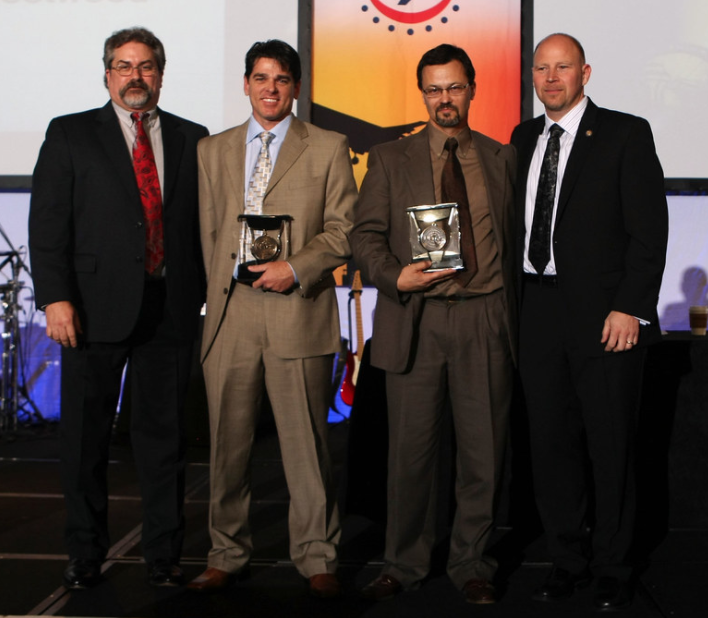
When the pilot of a Cessna Centurion radioed in and reported engine troubles the morning of Sept. 6, 2011, a pair of veteran air traffic controllers at Corpus Christi Tower and TRACON (CRP) sprang into action.
Frank Fisher, a 22-year veteran with 14 years at CRP, had just received the position relief briefing from fellow veteran Greg Fleetwood to assume the North Radar position. The pilot had been receiving Visual Flight Rules (VFR) or clear conditions on his flight en route to Houston from McAllen, Texas, and was about 12 miles south of Corpus Christi International. He needed to land right away, as his single engine went from running rough, to barely running, to pouring oily smoke into the cockpit, to having to be shut down.
Fisher: November 57S does it look like you’re going to be able to make it, sir?
Pilot: I’m trying to, it’s… I’m shutting the engine down. I’m coasting now.
Frank and Greg’s teamwork helped avert disaster. While Frank gave the pilot flight instructions and alerted a nearby Coast Guard helicopter to the situation, Greg contacted a nearby airfield — Cabaniss Field, just a few miles southeast of CRP — and told operators there to expect an emergency.
With time running short, the controllers managed to keep the pilot calm and direct him to Cabaniss, where the pilot made a safe landing. Kraig Kidd, the NATCA facility representative at CRP, said he had never submitted an Archie League nomination before this one, but he knew Frank and Greg’s actions were worthy of recognition.
“When I went back and listened to the tape, I was like, ‘Oh my God, this is special,’” Kidd said. “The way they handled it was outstanding.”
Kidd has been at Corpus Christi for 14 years, he said, and went out of his way to mention how consistent Frank and Greg have been over the course of their careers. He said the situation was extraordinary, but that Frank and Greg were up to the task.
“They’re extremely reliable controllers and people in general,” Kidd said. “And they’re humble, too. I am sure they would say ‘hey, anyone else would have done it,’ because they’re those kind of people.”
The pilot later called the facility to pass along his thanks. He noted that he had filed an Instrument Flight Rules (IFR) – meaning conditions are not clear – flight plan, planning to cruise at 7,000 feet. But when he called to get it, there was no flight plan stored. Since the weather was good, he opted to go VFR instead, cruising at 7,500 feet.
“[The pilot] said without the extra 500 feet of altitude, he probably would not have made it to the airport,” Kidd said.
And thanks to a lucky change in plans and the hard work of two dedicated, experienced air traffic controllers, the pilot and his plane landed safely.
Western Pacific Region: Kevin McLaughlin, Southern California TRACON
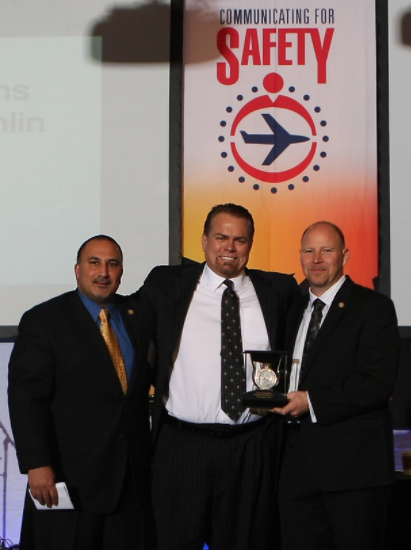
Air traffic controller Kevin McLaughlin was working the Shore radar position in the Coast Area at Southern California TRACON on July 29, 2011, when a student pilot flying a Cirrus SR20 checked in on his frequency. He was at 4,500 feet and flying along the California coastline. A few minutes beforehand, the aircraft had a high oil and cylinder temperature reading. When McLaughlin confirmed this information, the pilot then advised that the temperature had decreased and he would continue heading toward Torrance, Calif. (TOA).
With 24 years of experience as a controller – seven at SCT and 17 at Philadelphia – and 27 years of experience as a pilot, McLaughlin had all the right skills to assist this pilot. Soon, he would be using them.
Two minutes later, the pilot informed McLaughlin that his exhaust gas temperature gauge (EGT) was in the red. McLaughlin suggested he divert to the closest airport, John Wayne, Orange County (SNA), just 10 miles away. The pilot agreed and McLaughlin gave him vectors and weather information.
But one minute after that, McLaughlin noticed the aircraft was continuing to descend. When asked why, the pilot said the temperature had decreased and he was going to continue to TOA. McLaughlin advised him to maintain his present altitude of 2,500 feet in case the engine failed over the ocean and the pilot needed to glide to shore. But the pilot continued to descend to a dangerously low altitude, confirming McLaughlin’s suspicion that the descent-induced cooling had only temporarily solved the problem. McLaughlin explained to the pilot that his oil temperature was decreasing because of the descent and the resulting increased airflow over the engine was causing it to cool The pilot was trading critical altitude for cooling effect.
The pilot was beginning to fly near the high seaside cliffs of Laguna Beach when he finally agreed to land at SNA. At this point, he was now experiencing a rough running engine.
McLaughlin: Do you have the coastline in sight there? You’re almost below the terrain there on the coastline.
N499SF: I have a coastline in sight. I’m at 700…700 feet.
McLaughlin: Okay. Alright, can you see if you can level to be able to make the airport, sir? I’m concerned about your position there reference the terrain.
McLaughlin declared an emergency for the pilot and then began to coordinate with the SNA tower to prepare for his arrival. McLaughlin then instructed the pilot to climb to about 800 feet. The location of the airport was again called and the pilot advised it was in sight.
While balancing the aircraft’s critical state and low altitude, McLaughlin was still able to consider the safest possibilities for the pilot. He worked with SNA to be able to give the pilot the shortest distance to a safe landing, the opposite direction use of Runway 1 instead of Runway 19.
President’s Award: Ken Greenwood, Josh Haviland, and Ryan Herrick, Seattle TRACON
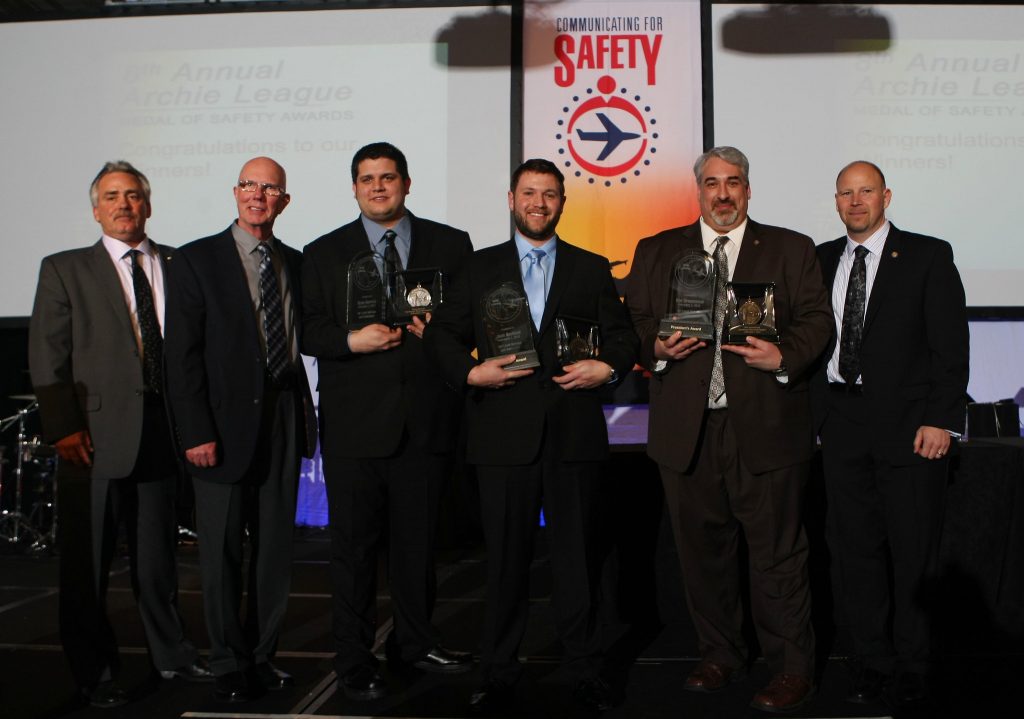
AUDIO: Listen to highlights of the ATC audio of this event.
BELOW: Watch the award presentation.
BELOW: Watch and listen to highlights from this save event.
Honorable Mention
ALASKAN REGION
Matt Quaid, Merrill Field ATCT
Bryan Geller, Fairbanks ATCT
CENTRAL REGION
Glen Jones, Kansas City ATCT
EASTERN REGION
Dan Cone, Potomac TRACON
GREAT LAKES REGION
Jim Doyle, Neil McLaughlin, Cleveland ATCT
Mike Everson, Chicago O’Hare ATCT
Sean Hathaway, Albert Honegger, Chicago Center
NORTHWEST MOUNTAIN REGION
Andy Olson, Seattle Center
Andrew Pierce, Seattle Center
Denise Spencer, Seattle Center
Renee Soerink, Seattle Center
SOUTHERN REGION
Scott Shepherd, Lexington ATCT
Molly Welsh, Miami ATCT
Richard Smith, Memphis Center
Luke Potwine, Miami Center
Mark Summerlin, Jacksonville Center
Luke Alcorn, Jacksonville Center
Kenneth Palmer, Daytona Beach ATCT
Marc Ciprioni, Daytona Beach ATCT
SOUTHWEST REGION
Dar Doublet, New Orleans Moisant ATCT
Rachel J. Gilmore, New Orleans Moisant ATCT
Terry Kubisty, Little Rock ATCT
Bob Goodman, Little Rock ATCT
Scotty Cuyler, Abilene ATCT
WESTERN PACIFIC REGION
Dwayne Thornton, Northern California TRACON
Tom Gallagher, Northern California TRACON
Video: Highlights of the 2014 Archie League Medal of Safety Award-Winning Flight Assists
Special Guest: FAA Acting Administrator Michael Huerta, at the 8th Annual Archie League Medal of Safety Awards Banquet
